Freight Shipping between Thailand and South Korea | Rates -Transit time – Duties & Taxes
Think of navigating international shipping as conquering a spicy Thai dish - you're not sure how it's gonna go, but you're excited for the adventure! The often complex landscape of freight shipping, understanding rates, transit times, and customs regulations between Thailand and South Korea can seem daunting. This destination guide aims to lay out the process in a digestible manner, shedding light on various freight options including air, sea, road, and rail. It will delve into the intricacies of customs clearance, duties, and taxes, delivering practical advice for businesses. If the process still feels overwhelming, let DocShipper handle it for you! As an experienced international freight forwarder, we transform these challenges into seamless experiences and prosperous ventures for your business.
Which are the different modes of transportation between Thailand and South Korea?
Which are the different modes of transportation between Thailand and South Korea? When shipping goods between Thailand and South Korea, it's like deciding on the best route for a marathon – every decision matters for the smooth run. Both countries are neighbors in the same region, with the sea as their playground and air as their sky bridge. However, with no land connectivity, those methods become the star players on the field. Understanding these geographical constraints, it's essential to choose either ocean or air shipping wisely, aligning with your business' unique needs. Imagine it as choosing between a powerful elephant (seafaring) or a swift falcon (airfreight), each with its own pros and cons. The game, therefore, is in the choosing.
Need help with your shipment?
Need assistance with your shipment? Dont hesitate to contact us even for a simple question. Choose the option that suits you
Live chat with an expert Chat on WhatsApp Free Quote 24hHow can Siam Shipping help you

Sea freight between Thailand and South Korea
Welcome to the comprehensive guide for transporting goods via ocean between Thailand and South Korea – two vibrant nations intertwined in a dynamic trading liaison. Thailand’s bustling port of Laem Chabang goes hand-in-glove with South Korea’s Busan Port, forming a maritime lifeline for the myriad of goods exchanged, from electronics to automotive parts. Opting for sea freight may test your patience, but it sure rewards your wallet, especially when handling bulk shipments.
However, let’s dive beneath the surface. The reality isn’t as smooth as our oceanic analogy! Lots of shippers find themselves tangled in a logistical labyrinth, grappling with regulatory nuances and operational pitfalls. Are you one of them? Clueless about how to navigate this trade route without stumbling into common missteps? Stay tuned. We’ll unravel the knots for you, piece by piece, showcasing the best practices and specifications required. We’re about to turn what feels like decoding a cryptic maritime Morse code into a smooth sailing journey. Prepare for insightful revelations that can make your maritime endeavor between Thailand and South Korea just a breeze!
Main shipping ports in Thailand
Laem Chabang Port
Location and Volume: Located just north of Pattaya, this port is the most significant in Thailand, with a shipping volume of over 8 million TEU per year. Known for its deep-water and large-capacity facilities, it plays a crucial role in the region’s trade.
Key Trading Partners and Strategic Importance: Laem Chabang’s primary trading partners include China, Japan, and the USA. Its strategic location near Bangkok and accessibility via road and rail links contribute to its importance for ASEAN trade.
Context for Businesses: If your business is looking to establish or expand in the East Asian market, the Laem Chabang Port can facilitate access to some of the fastest-growing economies in the region. It’s well-equipped to handle high shipping volumes, making it great for businesses with considerable shipping needs.
Bangkok Port
Location and Volume: Located in Khlong Toei and the city of Bangkok, this port is the second busiest in Thailand and handles over 1 million TEU of cargo annually.
Key Trading Partners and Strategic Importance: Apart from its neighbouring countries, the Bangkok Port swaps significant amounts of cargo with China, Asia Pacific countries, and the United States. Its proximity to the heart of Thailand’s capital city makes it an indispensable asset for businesses operating within and beyond ASEAN boundaries.
Context for Businesses: For those companies planning to penetrate the bustling markets of Bangkok and capitalize on the vibrant South East Asian economies, Bangkok Port stands as an advantageous choice, given its urban centrality and the ease of further distribution via Thailand’s vast intercity transport network.
Songkhla Port
Location and Volume: Located on the southern gulf coast of Thailand, Songkhla Port plays a secondary role in the country’s shipping, managing over 100,000 TEU annually.
Key Trading Partners and Strategic Importance: Songkhla Port has significant trade linkages with neighbouring Malaysia and Indonesia, as well as countries afar like Australia and China. The port specializes in handling natural resources like coal, timber, and rubber.
Main shipping ports in Thailand
Laem Chabang Port
Location and Volume: Located just north of Pattaya, this port is the most significant in Thailand, with a shipping volume of over 8 million TEU per year. Known for its deep-water and large-capacity facilities, it plays a crucial role in the region’s trade.
Key Trading Partners and Strategic Importance: Laem Chabang’s primary trading partners include China, Japan, and the USA. Its strategic location near Bangkok and accessibility via road and rail links contribute to its importance for ASEAN trade.
Context for Businesses: If your business is looking to establish or expand in the East Asian market, the Laem Chabang Port can facilitate access to some of the fastest-growing economies in the region. It’s well-equipped to handle high shipping volumes, making it great for businesses with considerable shipping needs.
Bangkok Port
Location and Volume: Located in Khlong Toei and the city of Bangkok, this port is the second busiest in Thailand and handles over 1 million TEU of cargo annually.
Key Trading Partners and Strategic Importance: Apart from its neighbouring countries, the Bangkok Port swaps significant amounts of cargo with China, Asia Pacific countries, and the United States. Its proximity to the heart of Thailand’s capital city makes it an indispensable asset for businesses operating within and beyond ASEAN boundaries.
Context for Businesses: For those companies planning to penetrate the bustling markets of Bangkok and capitalize on the vibrant South East Asian economies, Bangkok Port stands as an advantageous choice, given its urban centrality and the ease of further distribution via Thailand’s vast intercity transport network.
Songkhla Port
Location and Volume: Located on the southern gulf coast of Thailand, Songkhla Port plays a secondary role in the country’s shipping, managing over 100,000 TEU annually.
Key Trading Partners and Strategic Importance: Songkhla Port has significant trade linkages with neighbouring Malaysia and Indonesia, as well as countries afar like Australia and China. The port specializes in handling natural resources like coal, timber, and rubber.
Main shipping ports in South Korea
Busan Port
Location and Volume: Situated on the southeastern tip of the Korean Peninsula, Busan Port plays a pivotal role in trade across Northeast Asia. It boasts a staggering shipping volume of over 20 million TEU.
Key Trading Partners and Strategic Importance: It serves as the main port for trading with key partners including China, Japan, the US, and Singapore. The port provides strategic access to major global shipping routes.
Context for Businesses: If your business aims to penetrate the Northeast Asian markets, Busan Port, with its advanced infrastructure and frequent shipping routes, could be a critical element in your strategy.
Incheon Port
Location and Volume: Positioned on the northwestern coast of South Korea, Incheon Port handles over 3 million TEU, the second largest volume in the country.
Key Trading Partners and Strategic Importance: Traders primarily from China, Japan, Vietnam, and the US utilize the port. It has profound strategic importance due to its proximity to capital city Seoul.
Context for Businesses: With its modernized container terminals and extensive hinterland in Seoul metropolitan area, Incheon Port can provide efficient distribution channels if you aim to target South Korean local markets.
Pyongtaek-Dangjin Port
Location and Volume: Located on the western coast of South Korea, Pyongtaek-Dangjin Port handles about 1.7 million TEU annually.
Key Trading Partners and Strategic Importance: Its key trading partners include China, Japan, and Southeast Asian countries with significance as a major import/export point for automobiles.
Context for Businesses: If your operations involve automobile or auto-parts transport, Pyongtaek-Dangjin Port’s specialized facilities could significantly streamline your logistics process.
Gwangyang Port
Location and Volume: Positioned on the southern coast of South Korea, Gwangyang Port manages a volume of more than 2 million TEU annually.
Key Trading Partners and Strategic Importance: It has strong trade connections mainly with China, ASEAN countries, and the US. Its strategic importance lies in its role as the hub of petrochemical and steel industries.
Context for Businesses: If you’re in the petrochemical or steel industry, leveraging Gwangyang Port’s specialty cargo handling capabilities may improve your supply chain efficiency.
Mokpo Port
Location and Volume: Situated on the southwestern coast of South Korea, Mokpo Port is relatively smaller with shipping volume of around 14,000 TEU.
Key Trading Partners and Strategic Importance: Key trading partners include China, Japan, and Vietnam. It has a unique importance in connecting Korea’s southwestern islands.
Context for Businesses: Businesses focusing on regional trade and exploiting lesser crowded ports might find Mokpo Port beneficial due to its strategic location and less congestion.
Ulsan Port
Location and Volume: Positioned on the east coast of South Korea, Ulsan Port currently handles over 430,000 TEU per year.
Key Trading Partners and Strategic Importance: China, Japan, and the US are the top trading partners. Its proximity to Ulsan Industrial Complex offers key strategic advantages.
Context for Businesses: If you’re involved in the heavy industry, Ulsan Port’s close connection to a major manufacturing hub could significantly aid your logistics strategy. Its specialization in petroleum and chemical shipment also offers distinct advantages.
Should I choose FCL or LCL when shipping between Thailand and South Korea?
When shipping goods from Thailand to South Korea, choosing between Full Container Load (FCL) or Less than Container Load (LCL), also known as consolidation, is a strategic decision. This choice directly impacts your cargo’s cost, delivery time, and overall shipping success. Let’s dive into understanding the differences to make an informed decision, considering your specific shipping needs. Remember, getting it right could mean the difference between smoother operations or unexpected hiccups. Let’s set sail on this sea of knowledge!
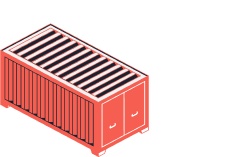
Full container load (FCL)
Definition: FCL (Full Container Load) shipping is when a single entity reserves an entire container for transporting goods, usually in either a 20'ft or 40'ft container. When to Use: FCL becomes the more economical and secure option when the cargo exceeds 13/14/15 CBM. Because the FCL container is sealed from origin to destination, it adds an extra layer of security - you're mitigating the risk of damage from shared cargo. Example: Consider a Thai automotive parts manufacturer exporting various parts equal to 17 CBM to a client in South Korea. It would be more cost-effective and safe for them to secure a 20'ft FCL container for their shipment. Cost Implications: While FCL shipping quotes may seem higher than LCL (Less than Container Load), keep in mind that the cost per unit is often lower, especially for higher-volume shipments. Also, potential risks associated with cargo sharing are decreased, which can indirectly save you from unforeseen expenses. Be sure to compare prices and factor in all variables before making a choice.
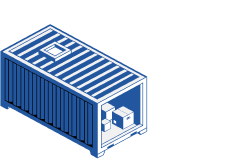
Less container load (LCL)
Definition: LCL (Less than Container Load) shipping is a method where your goods share container space with others. It's a cost-effective option when you don't have enough cargo to fill an entire container. When to Use: Opt for LCL shipment when your cargo volume is less than 13/14/15 CBM. This makes it flexible for low volumes, letting you pay only for the space your cargo occupies in the shared container. Example: Consider a sporting goods store in Bangkok with orders to ship 10 CBM of soccer balls to a store in Seoul. Since the volume is less than a full container load, an LCL freight is an appropriate choice to conserve cost and space. Cost Implications: While per unit pricing may be higher in LCL compared to FCL (Full Container Load), it's beneficial for less than full-load cases. You would only pay for the space you use, which can lead to substantial savings if your shipment doesn't require a full container. Always consider the volume, weight, and nature of your goods when considering LCL shipping quotes.
Hassle-free shipping
Are you puzzled over whether to ship by consolidation or full container from Thailand to South Korea? Let DocShipper help! With our mission to make cargo shipping hassle-free, our ocean freight experts assist in determining the optimal choice based on payload size, budget, and delivery timeline. We create personalized, seamless shipping scenarios tailored to your needs. Ready to take your business global without the worry? Reach out for a free shipping estimation now!
How long does sea freight take between Thailand and South Korea?
Sea freights between Thailand and South Korea typically average around twenty days. However, keep in mind that transit times are influenced by factors such as the specific port of departure and arrival, the weight and nature of goods, and certain seasonal considerations. To get the most accurate estimation, turn to a freight forwarder like DocShipper that can provide a tailored quote for your shipping needs.
Here’s a simple comparison chart displaying the average transit times in days for sea freight between the main ports in Thailand and South Korea:
Port in Thailand Port in South Korea Average Transit Time Port of Laem Chabang Port of Busan 22 Port of Bangkok Port of Incheon 25 Map Ta Phut Port of Gwangyang 26 Port of Songkhla Port of Ulsan 24Please note, these figures can fluctuate, so it’s always best to get a bespoke quote for your specific freight needs.
How much does it cost to ship a container between Thailand and South Korea?
Ocean freight rates for shipping a container between Thailand and South Korea can range widely. Due to factors such as the point of loading and destination, carrier choice, goods’ nature, and monthly market fluctuations, a specific shipping cost can’t be offered upfront. We understand this ambiguity might be overwhelming. But worry not, our shipping specialists take these factors into account, and they strive to offer the best possible rates tailored to your unique needs, ensuring you get value for every cent. Rest assured, we quote on a case-by-case basis, optimizing your cost scenario without any compromise on service quality. Be sure to consult us for your specific shipping requirements.
Special transportation services
Out of Gauge (OOG) Container
Definition: Out of Gauge (OOG) containers are special containers used for cargos that don’t fit within the dimensions of a standard container, hence the term ‘out of gauge cargo’. These containers have flat racks that can hold wide or long goods. Suitable for: OOG containers are ideal for transporting large items, such as heavy machinery and industrial equipment, artworks and architectural structures. Examples: For example, a business shipping turbine parts, tractors, or construction equipment from Thailand to South Korea would benefit from using an OOG container. Why it might be the best choice for you: If your cargo doesn’t fit into the dimensions of a standard shipping container, an OOG container can handle those odd sizes and shapes, avoiding potential damage during the journey.
Break Bulk
Definition: Break bulk refers to goods that must be loaded individually and not in containerized cargo, or in other words, loose cargo load. Suitable for: Break bulk is suitable for the shipment of goods that are oversized, heavy, or on pallets, such as construction equipment, massive vehicle parts, iron, or wood beams. Examples: If your business involves shipping giant propellers or substantial crates of heavy machinery from Thailand to South Korea, break bulk could be the best choice. Why it might be the best choice for you: Break bulk allows for the individual handling of each item, which means that each piece can be given the special attention it requires.
Dry Bulk
Definition: Dry bulk usually refers to granular products shipped in large quantities, such as grain, coal, and minerals. Suitable for: Dry bulk is ideal for large volumes of homogenous products like gravel, sand, or cereals. Examples: An agricultural business exporting large quantities of rice, or a mining company shipping iron ore from Thailand to South Korea could benefit from dry bulk shipping. Why it might be the best choice for you: Dry bulk shipping is cost-effective for transporting vast quantities of granular products, reducing your overall expenditure on shipping.
Roll-on/Roll-off (Ro-Ro)
Definition: Roll-on/Roll-off (Ro-Ro) service refers to a type of vessel equipped to carry wheeled cargo, such as cars, trucks, semi-trailer trucks, trailers, and railroad cars that are driven on and off the ro-ro vessel on their own wheels. Suitable for: Ro-Ro is suitable for all self-propelled cargos, these are typically vehicles. Examples: If you’re involved in exporting cars, trucks, or heavy equipment like cranes from Thailand to South Korea, Ro-Ro service is your ideal choice. Why it might be the best choice for you: Ro-Ro helps ensure your vehicles arrive in the same condition as when they were shipped, due to the minimal handling of the cargo.
Reefer Containers
Definition: Reefer containers are essentially refrigerated containers used to ship perishable goods that must be maintained at a constant temperature. Suitable for: Reefer containers are suitable for fresh produce, seafood, dairy products, or any perishable goods. Examples: They are ideal for businesses in Thailand shipping seafood, tropical fruits, or dairy products to South Korea. Why it might be the best choice for you: Using reefer containers ensures your perishable goods reach their destination fresh and ready for consumption, maximizing their value upon arrival.
For more insights into your shipping needs between Thailand and South Korea, DocShipper can help you make the right choice based on your specific requirements. We invite you to contact us for a free shipping quote in less than 24 hours. Make the right move with DocShipper for your shipping solutions.

Air freight between Thailand and South Korea
Speed, reliability, and cost-effectiveness make air freight the star player for shipping from Thailand to South Korea, especially for small, high-value items. Imagine you’re shipping a compact batch of artisanal silk scarves, or perhaps cutting-edge electronic components. Almost like an express elevator, air freight whisks these goods away faster than any other shipping method, also assuring consistent delivery times.
However, shippers often trip over unseen obstacles by overlooking crucial factors in air freight. It’s like ordering a fancy dish without knowing its ingredients: you might end up paying more than you bargained for! Incorrectly estimating the shipping cost by miscalculating the weight of goods, or being unaware of the best practices, can turn what could have been a cost-effective shipment into an expensive error. These common missteps underscore the importance of getting your ducks in a row for successful air freight experience. In the following guide, we’ll dive into details, illuminating these often-overlooked factors on your path to ace air freight between Thailand and South Korea.




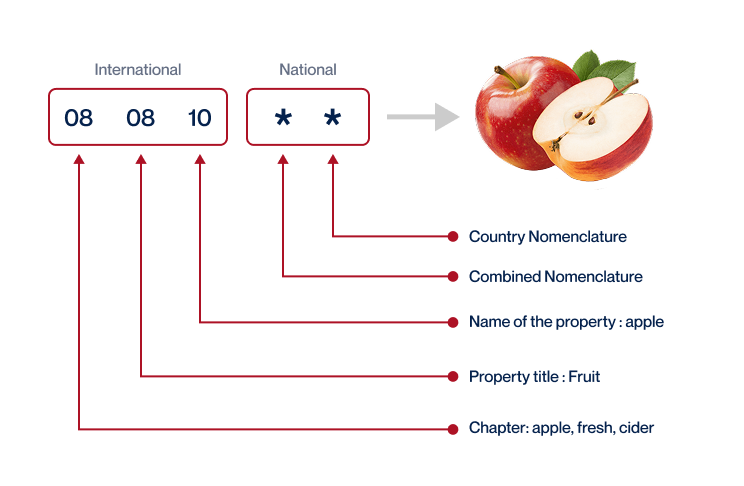
Contact Details for Customs Authorities
Thailand Customs

Official name: Customs Department, Ministry of Finance, Thailand Official website: http://www.customs.go.th/
South Korea Customs
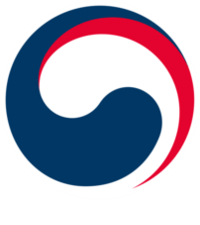
Official name: Korea Customs Service Official website: http://www.customs.go.kr/
Get Started with Siam Shipping
Your first steps with Siam Shipping
Additional logistics services
Warehousing
Pinpointing trustworthy warehousing in unfamiliar territories can be taxing, especially with niche requirements like temperature control for product integrity. For instance, sensitive electronics or fine wines demand exact climate settings. Overcome these hurdles by exploring our comprehensive warehousing solutions. Cut through the hassle, and ensure optimal care for your goods. More info awaits on our dedicated page: Warehousing
Packing
When shipping goods from Thailand to South Korea, proper packaging is paramount to ensure your shipment arrives undamaged. With the right freight forwarder at your side, tasks like repackaging electronics, securing fragile ceramics, or wrapping textiles becomes less daunting. Our packaging and repackaging services are tailored to meet various product needs, providing peace of mind for your transnational shipping venture. More info on our dedicated page: Freight packaging

Transport Insurance
Shipping cargo always carries inherent risks. This is where cargo insurance outpaces fire insurance; it safeguards your consignments during transit, not just from fire, but also other mishaps like damage, theft, and loss at sea. For instance, a container of electronics gets damaged due to rough seas - cargo insurance makes sure you're covered. Mitigate those unpredictable risks with a touch of preparation. More info on our dedicated page: Cargo Insurance.
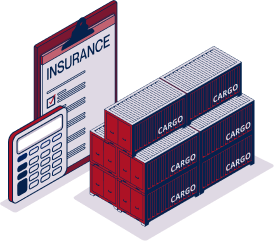
Household goods shipping
Know the angst of moving personal stuff between Thailand and South Korea? Be it intricate artifacts or bulky furniture, your belongings are handled with utmost care and adaptability. Think of your delicate Thai porcelain making a safe journey to Busan. More info on our dedicated page: Shipping Personal Belongings.
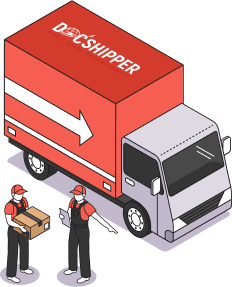
Procurement in Thailand
Struggling to find reliable suppliers for your Thailand-Korea shipping? Our team at DocShipper is committed to eradicating language barriers and simplifying supplier sourcing. Whether in Asia, East Europe, or beyond, we oversee your entire procurement process for a hassle-free experience. Imagine us as your professional procurement guide, leading you to trustworthy, quality suppliers. More details on how we can assist are on our Sourcing services page.

Quality Control
Quality control is your secret weapon to ensure smooth shipping from Thailand to South Korea. It's the pivotal step to verify your goods are manufactured correctly and meet industry standards before they hit the road. Imagine sending automotive parts with undetected flaws - it's a recipe for returns and unhappy clients. With our quality inspections, we help avoid these setbacks, saving you time and stress. Want the inside track? More info on our dedicated page: Quality Inspection
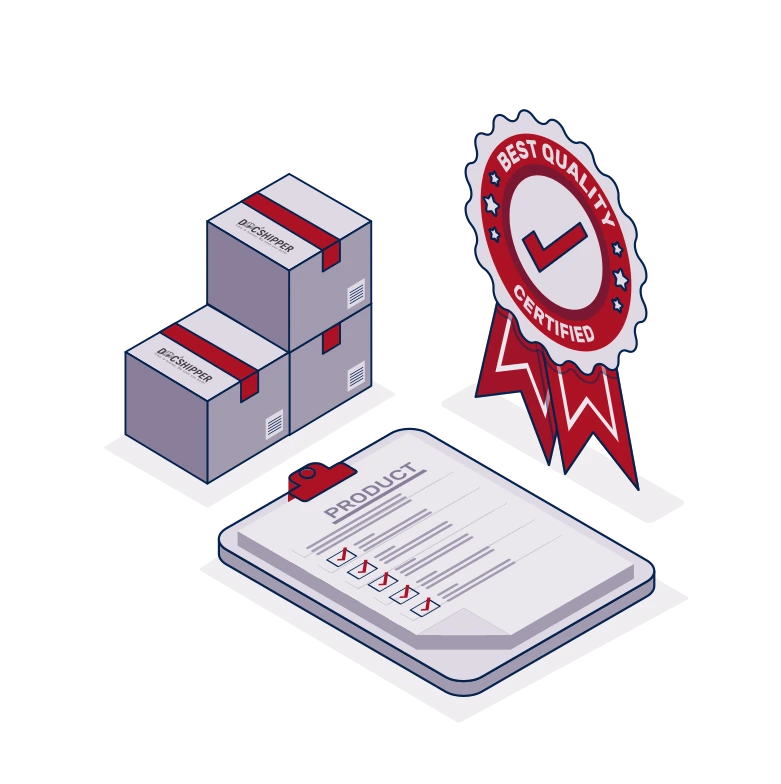
Conformité des produits aux normes
Staying on top of product regulations for international shipping can be tough. Our Product Compliance Services take this uncertainty out of your hands. We'll test your goods in our lab and assist in obtaining necessary certifications, ensuring they meet all destination regulations. No need for you to get buried in paperwork! Explore how we simplify this critical process on our Product compliance services page.





